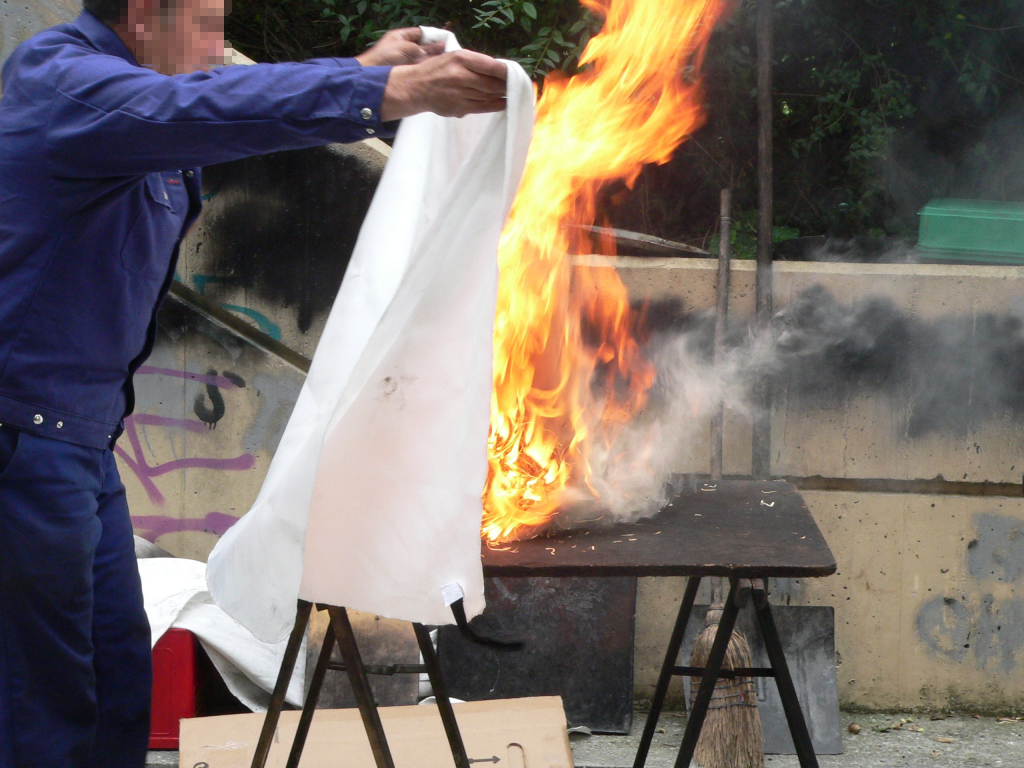
Safety must be a constant priority when using high-temperature devices or working with open flames. Sparks could burst into flames suddenly, both in your professional workshop as well as at your school lab, and within commercial kitchens and your home garage. During welding and soldering operations, as well as the handling of combustible liquids, sparks and flames demand heightened safety awareness. These workplaces depend on fire blankets as their fundamental safety equipment. Fire blankets function as basic yet powerful devices which block oxygen flow to suppress small fires. This manual explains the importance of fire blanket usage in welding environments, along with guidelines for their correct safety operation.
The fire blanket constitutes a safety implement formed from flame-retardant fabrics like fiberglass mesh or treated wool. Flame-resistant fabrics maintain structural strength while effectively extinguishing fires under extreme temperatures. Fire blankets appear in multiple dimensions and get folded before being stored inside a quick-open pouch or case to allow rapid emergency access. Fire blankets substitute for fire extinguishers by providing fire suppression without creating any leftover residue that extinguishers transport.
Fire Blanket Mechanism Explained
A fire blanket works effectively by cutting off the oxygen supply that fire requires for combustion. When wrapped above a burning element, the blanket creates a sealed space which stops oxygen from reaching the fire. The flames on both surfaces and clothing will effectively be extinguished within seconds by this action. Fire blankets serve as protective barriers in welding settings that block sparks, molten slag, and radiant heat from reaching the surroundings or personnel.
Fire blankets prove useful for a variety of applications across different settings:
In kitchens, they help extinguish both grease remnant fires on stove-tops and burning clothes or towels.
Fire blankets function as protective equipment to prevent molten metal and hot slag from reaching personnel.
A fire blanket can serve as emergency protection for a person who has gotten their clothing on fire.
Manufacturing operations utilise them to provide immediate fire retardant protection at their plants or chemical production facilities.
Fire blankets serve outdoor users by helping them put out campfires and sheltering them from surprise blaze outbreaks.
Comparison of Fire Blankets to Fire Extinguishers
Fire extinguisher and blankets both help in fire safety but they function uniquely for different types of emergencies. Fire extinguishers release chemical substances while fire blankets make direct physical contact with flames to suffocate them. The user-friendly fire blankets need minimal training which allows them to become the best tool for managing small fire situations. Using fire blankets requires fewer clean-up tasks because no chemical residue will remain behind after usage.
Double check every step in the fire blanket usage process.
The operation of fire blankets is simple to learn. The following deployment instructions will help you operate them safely:
To access the blanket from its box pull the tab down.
The blanket should be held straight up because this protects your face along with your hands.
Proceed towards the fire at a slow pace keeping safety precautions in mind.
Use the blanket to cover the entire fire surface and hide the fire source completely.
If possible make sure to disable any heating elements.
Keep the blanket fixed over the fire for minimum 15 minutes to make sure nothing remains burning.
If the fire was large-scale or you cannot confirm complete extinguishing then immediately contact emergency services.
Applications of Fire Blanket Safety during Welding and Manufacturing Procedures
Fire blankets provide welders protection during grinding and cutting operations along with direct shielding benefits. Ignition of flammable materials fails to occur when surfaces face hot metal shards which easily cause damage. Fire blankets for welding use heavier materials such as silica, ceramic fiber or treated fiberglass in order to resist temperatures reaching 1000°C (1832°F) or beyond.
These blankets function properly when used in these ways:
Welding location protector by covering the floors or walls
Safety protection of gas tanks, along with related cables
Thermal insulation is created by wrapping hot parts for cooling
Barriers that protect onlookers from radiant heat exposure
You should utilise welding fire blankets which carry industrial or welding-specific certifications for these types of environments.
Information About Fire Blanket Durability
Fire blankets should be use only once during emergency situations. Used fire blankets become damaged by heat and residue, which blocks their full protective capability during a second use. Before reuse, you should order a new fire blanket since heat exposure typically damages them even though they may seem to be intact.
Final Thoughts: Making Fire Safety a Priority
Each type of dwelling and work environment should possess fire blankets for optimal fire safety protection at an affordable price. The protection of personnel and property during welding operations depends exclusively on fire blankets in hot work settings. Because they are simple to use and clean and fast to put into action fire blankets deliver both dependable protection and assurance during fire emergencies. Spend money now on a premium fire blanket to secure your home against fire risks and to create an essential element of your fire defense system.




